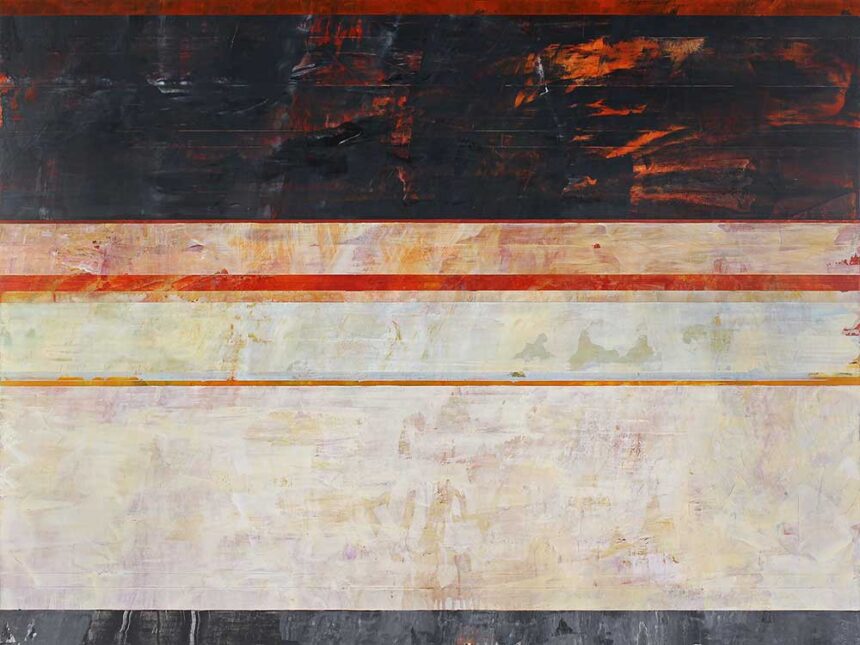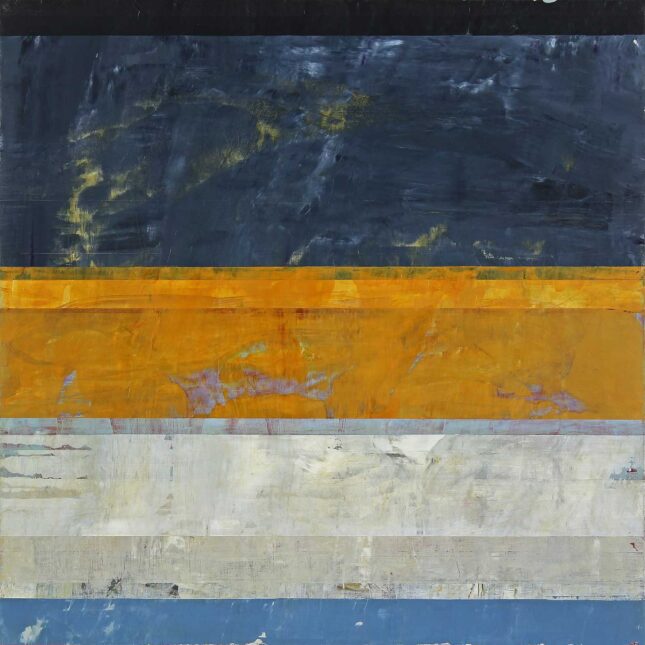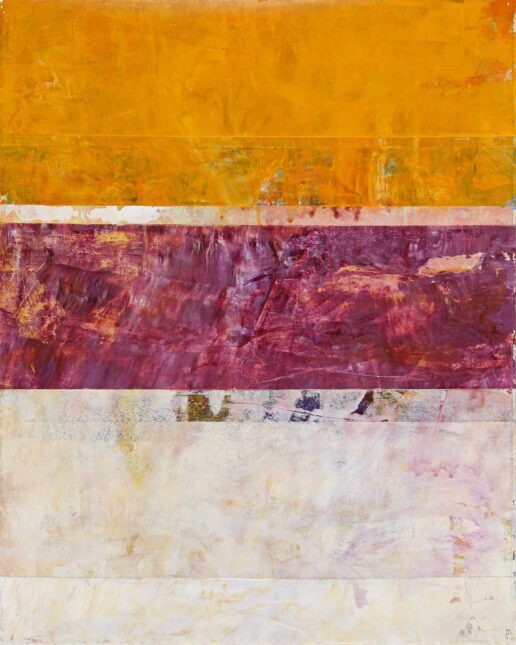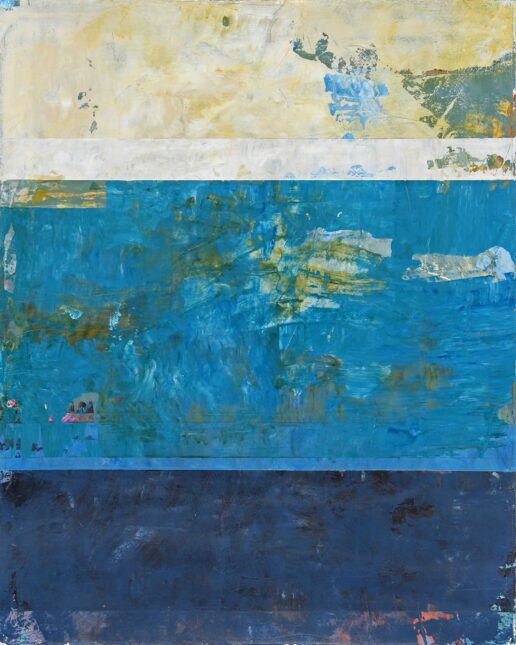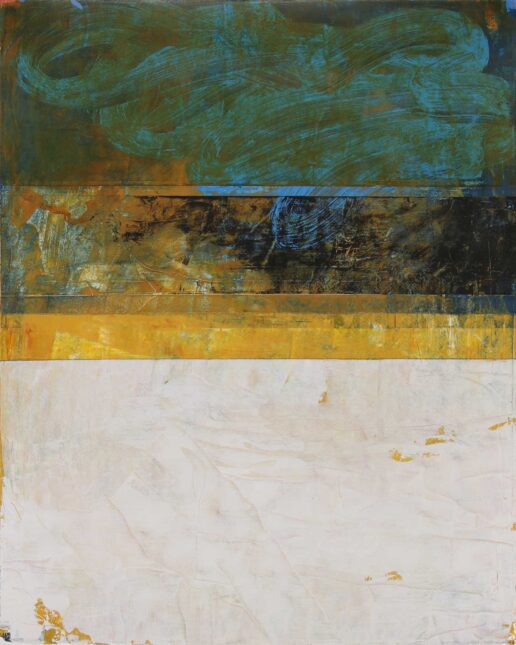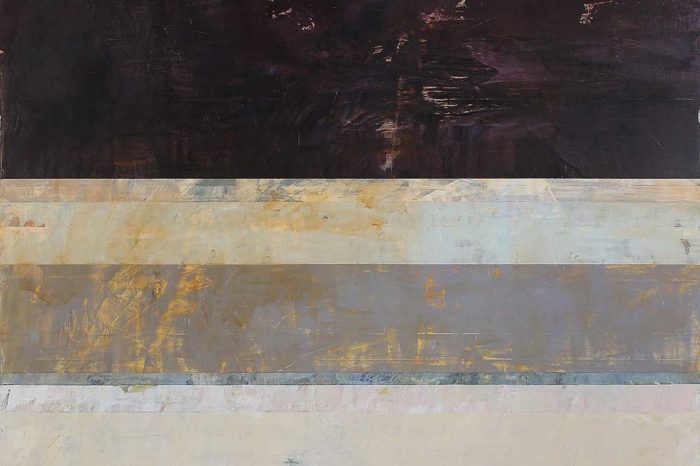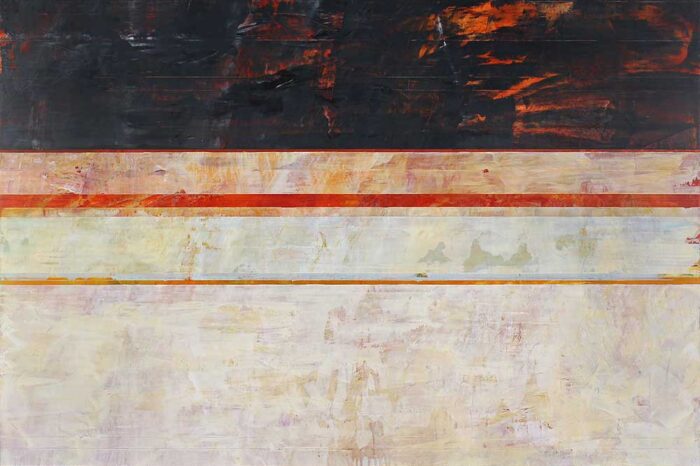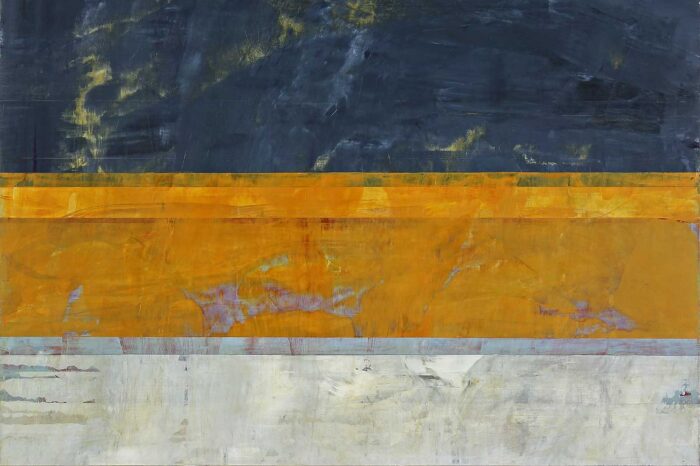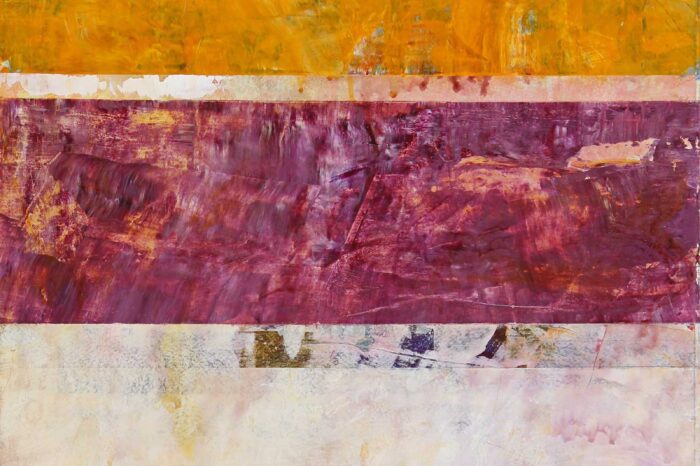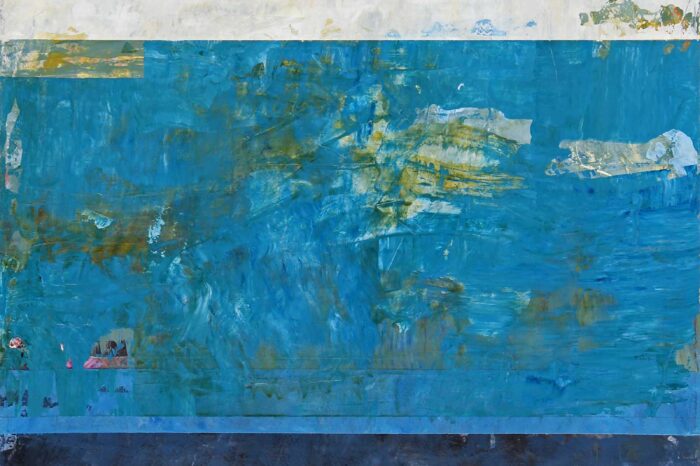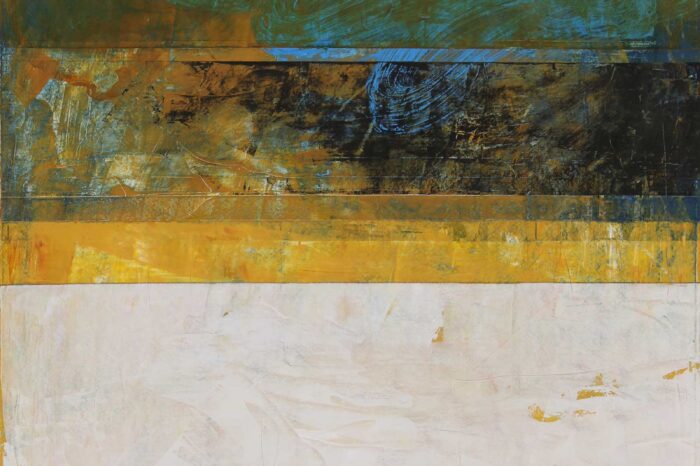Clay Johnson was born and raised in Durham, NC, where he studied art and art history at Duke University, receiving a B.A. degree in 1985. He then worked for several years as assistant to painter Robert Natkin in Connecticut and New York City. In 1998 he began exhibiting paintings from his first series of mature work, which was loosely grid-based, and was inspired by the paintings of Paul Klee, such as Ancient Sound. Since then Johnson’s work has been exhibited widely at galleries across the country. Johnson currently lives and works in Laramie, Wyoming.
Born 1963, Durham, North Carolina
EDUCATION
1985
BA in Studio Art & Art History, Duke University, Durham NC
SOLO EXHIBITIONS
2021
Beneath the Surface, William Havu Gallery, Denver
Over the Line: New Paintings by Clay Johnson, Page Bond Gallery, Richmond VA
2020
Wide Open Spaces, 425 Market Street, San Francisco
The Wide Open Landscape, 555 California Street, San Francisco
Clay Johnson: New Paintings, Kim Eagles-Smith Gallery, Mill Valley CA
2019
Latitude: New Paintings by Clay Johnson, George Billis Gallery LA, Los Angeles
Clay Johnson: New Paintings, William Havu Gallery, Denver
2018
New Paintings by Clay Johnson, George Billis Gallery, New York
2017
The Connected Edge, William Havu Gallery, Denver
2016
Wide Open: New Paintings by Clay Johnson, Elins Eagles-Smith Gallery, San Francisco
2003
Clay Johnson: New Paintings, District Fine Arts, Washington DC
2002
Clay Johnson: New Paintings, District Fine Arts, Washington DC
GROUP EXHIBITIONS & FAIRS
2023
Good Will III, Page Bond Gallery, Richmond VA
2022
ArtMarket SF (Kim Eagles-Smith Gallery), San Francisco
Good Will: A Group Exhibition, Page Bond Gallery, Richmond VA
2021
Architecture Shape & Color, Page Bond Gallery, Richmond VA
Poets: A Group Exhibition, Page Bond Gallery, Richmond VA
2020
Glean: Select Gallery Artists, Page Bond Gallery, Richmond VA
Abstraction: Old Friends, New Faces, Kim Eagles-Smith Gallery, Mill Valley CA
2019
Glean: Select Gallery Artists, Page Bond Gallery, Richmond VA
The Modern Landscape, Kim Eagles-Smith Gallery, Mill Valley CA
Luxembourg Art Prize Finalists Exhibition, La Pinacothèque, Luxembourg City
2018
SOFA (George Billis Gallery), Chicago
Selected Abstracts, George Billis Gallery LA, Los Angeles
Summer Group Show, George Billis Gallery, New York
Art Market SF (Elins Eagles-Smith Gallery), San Francisco
Art Palm Springs (George Billis Gallery), Palm Springs
2017
New Acquisitions, University of Wyoming Art Museum, Laramie WY
Art Market SF (Elins Eagles-Smith Gallery), San Francisco
Art on Paper (Elins Eagles-Smith Gallery), New York
2016
ArtMarket Hamptons (Elins Eagles-Smith Gallery), Bridgehampton NY
ArtMarket SF (Elins Eagles-Smith Gallery), San Francisco
2015
Art Silicon Valley (Elins Eagles-Smith Gallery), San Mateo CA
2004
Art of the Twentieth Century (Samson Fine Arts), Park Avenue Armory, New York
2002
Gallery Artists, Samson Fine Arts, New York
Poetic Minimalism, District Fine Arts, Washington DC
Works on Paper (Samson Fine Arts), Park Avenue Armory, New York
2001
Gallery Artists, Samson Fine Arts, New York
Works on Paper (Samson Fine Arts), Park Avenue Armory, New York
2000
Works on Paper (Samson Fine Arts), Park Avenue Armory, New York
1999
Small Works, District Fine Arts, Washington DC
Talent 1999, New Artists/New Works, Samson Fine Arts, New York
Works on Paper (Samson Fine Arts), Park Avenue Armory, New York
NOTABLE COLLECTIONS
University of Wyoming Art Museum
La Pinacothèque (Luxembourg)
The Kimpton Corporation
Allan Myers Corporation
Collection of Dr. Andrea Shepard
Collection of Sheldon Ostroff
STRATA SERIES
When we think of past experiences, places we’ve visited, or people we’ve known, we’re not drawing on a unified continuum of experience. Rather these entities exist in our memories as collections of moments, collaged together and plastered with a label—School, Friend, Work. Whether very general (e.g., “Human”) or quite specific (“Stephen”), these concepts live in the mind as aggregations of snapshots, pasted together in no particular order, the most recent blended with the most distant (and all of the others) to create a representation of whatever the thing, place, person, or idea may be.
The Strata Paintings involve a kind of editing that’s similar to what our brains do in constructing images of the people and things that we remember. I layer many sections over one another, keeping the parts that I like and painting over the less memorable elements, or modifying them so that they fit with my idea of what the whole is (or should be). Just as our brains forget many unremarkable experiences, my paintings contain lots of layers beneath the visible surface, which nevertheless influence their perception in subtle ways.
ATOMIC SERIES
It was in the 8th century BCE that the Indian scientist and philosopher Aruni proposed that “particles too small to be seen mass together into the substances and objects of experience.” His theory may well have inspired the ancient Greek philosophers commonly regarded as the founders of Atomism—Leucippus and Democritus. Democritus theorized that everything is composed of many tiny particles (atoms) that are too small to see, and which are in constant motion. The objects that humans perceive through their senses are merely random packings and scatterings of these atoms within the void.
In abstract painting, we trade the depiction or description of something specific for the chance to wrestle with the underlying truths that govern the behavior of entities at the most basic level, whether inanimate objects, celestial bodies, human beings, or “particles too small to be seen.”
These are the universal forces of attraction and repulsion, harmony and discord, gravity and levity, belonging and isolation…the list goes on. When working with such fundamental concepts, it seems fitting to use the most basic building blocks. Atoms in the void—the subject of a picture doesn’t get any simpler than that. Or maybe these are scenes from the other end of the scale spectrum—stars and planets in space. But it doesn’t matter. The same rules apply.
While the process of making these paintings is not random, it is improvisational. So “atoms” that belong to a given cluster in the early stages might, in the end, be part of a different configuration. And since the pictures are built by means of layering, elements that are at one time central characters often become members of the supporting cast, yielding their prominence to others that come later in the process.
-
Over the Line: New Paintings by Clay Johnson
April 2 - April 30, 2021
-
Glean : Select Gallery Artists
December 10 - January 16, 2021
-
GOOD WILL: A GROUP EXHIBITION
DECEMBER 10 2021 - JANUARY 22, 2022
-
ARCHITECTURE SHAPE & COLOR: A Group Exhibition
August 26 - September 25, 2021
-
POETS: A Group Exhibition
JULY 15 - AUGUST 21, 2021
-
GOOD WILL
DECEMBER 7, 2023 - JANUARY 22, 2024

